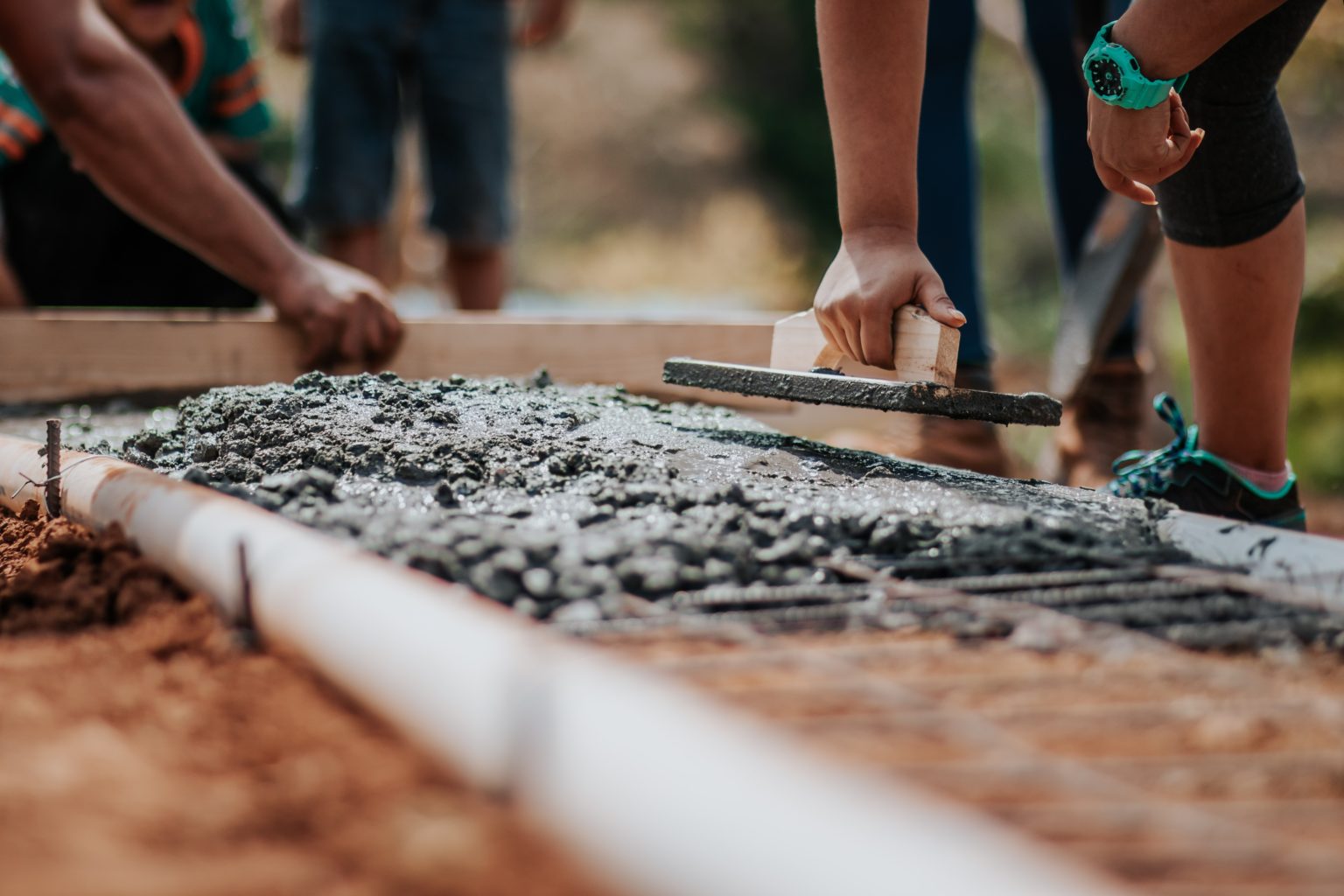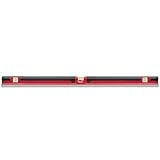Tired of boring, plain concrete? There are plenty of exciting ways to spice up your driveway, sidewalk, or pool deck. Since concrete is so versatile, it’s easy to add a custom finish. Sand finish concrete is one of the most popular options since it’s both stylish and practical. Our guide will show you how to add this classic finish to your concrete.
What Is Sand Finished Concrete?
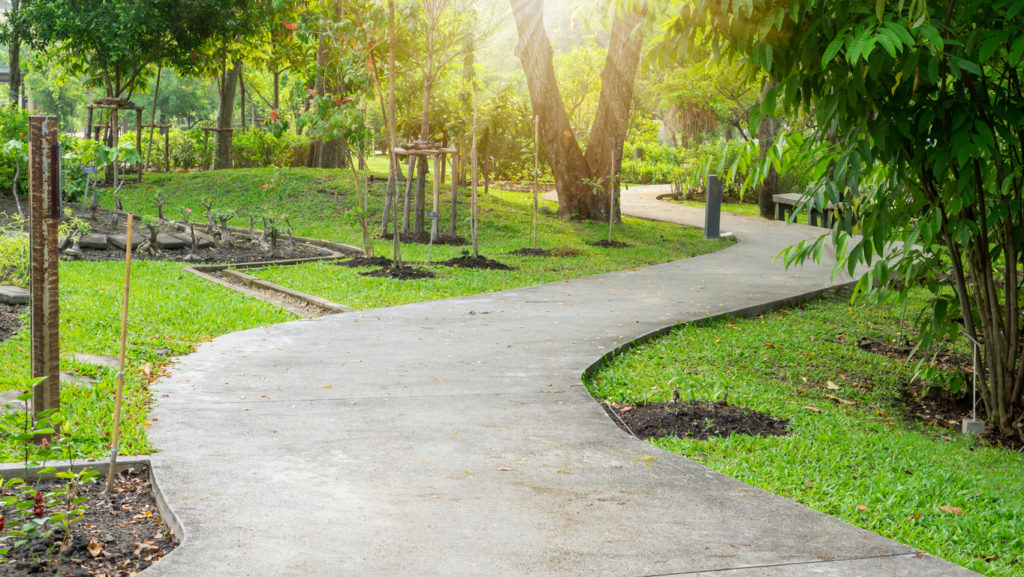
Sand finish concrete gets its name from its sandy texture and appearance. When you look closely at this concrete, you will notice subtle speckles of different colors. These small specks stand out from the overall surface of the concrete, creating a distinct texture. The finish makes it look like the concrete has a fine layer of sand scattered over the top.
Sand finish concrete is a little different from some other concrete finishes. Unlike acid-etched concrete or brushed concrete, the texture isn’t added after you pour the concrete. Instead, the finish is mixed directly into the concrete before pouring it.
Reasons to Use Sand Finish Concrete
Comfortable Anti-Slip Texture
One of the biggest perks is that the texture reduces slipping. At the same time, it is gentle and soft enough that you can still walk on it barefoot. This makes sand finish concrete very popular for sidewalks, patios, pool decks, and other areas that occasionally get wet, helping you prevent accidents without sacrificing comfort.
Appealing Natural Look
Since sand finish concrete mimics the look of sand, it has a very pleasant, organic look. When you use it on pathways, it seamlessly blends into the natural surroundings. Instead of seeming industrial or modern, a sand finish provides a softer, gentler feel. Especially when you pick shades of brown or beige, sand finish concrete tends to complement landscaping very well.
Versatile Appearance
The subtle texture of a sand finish adds some visual appeal without being too distracting. This makes it very versatile. You can use it for everything from formal entryways to basement floors to shed patios. This concrete finish is also very easy to work with. You can easily add stamps, diamond cuts, or decorative borders to your concrete. All these different options make it easy to customize your concrete to match your home.
How to Sand Finish Concrete
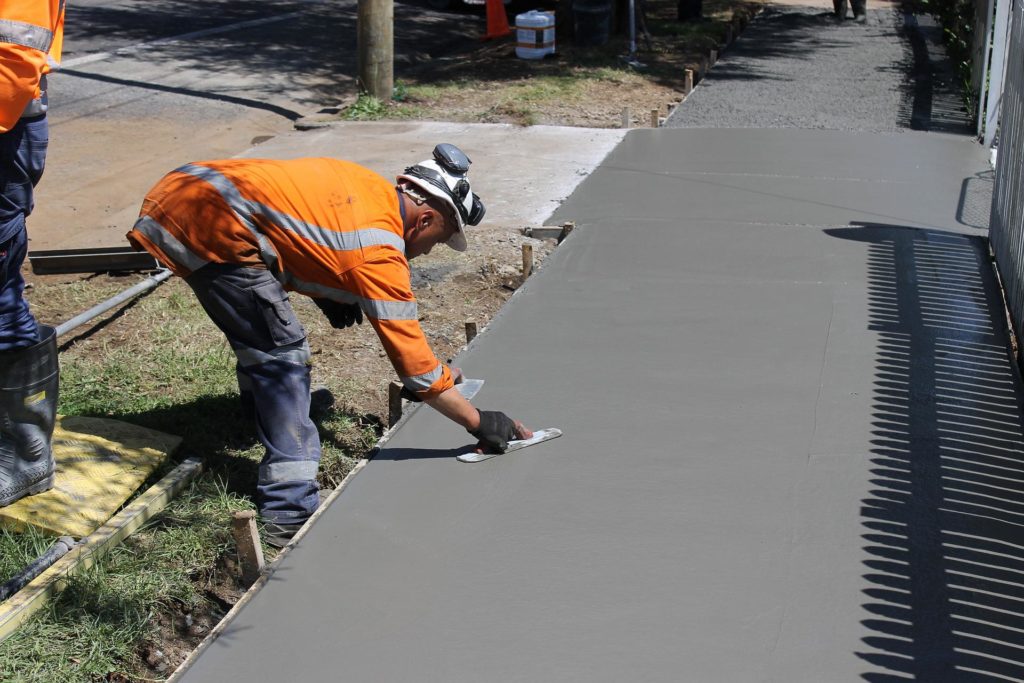
To do a traditional sand finish, you’ll need to start from scratch and mix the texture directly into your unset concrete. The typical sand finishing process involves these steps.
1. Prepare Your Surface
Like any other concrete project, proper preparation is key. You’ll need to carefully mark out your work area and figure out where you want the concrete to go. Depending on your project, you might want to excavate space for your concrete pour or use wood to build a form. Keep in mind that lumber isn’t guaranteed to be straight. We’ve found it helpful to run a string along your form to line up your edges. Next, create a level layer of crushed stone to facilitate draining. To prevent cracking, you can add steel mesh or rebar to reinforce the concrete.
2. Mix Concrete Sand Into Your Concrete
You have a few different options when preparing your sand finish concrete mixture. Depending on where you shop, you might be able to find pre-made concrete mixes for sand finish concrete. If you can’t find the exact product you like, you can make it yourself. You will need to add concrete sand to your standard concrete mixture. Make sure to use concrete sand instead of mortar sand or regular sand because it’s texture provides better results. The general ratio for making sand finish concrete is blending cement, sand, and aggregate in a 1:1.5:3 ratio. However, you can tinker around with this mixture and add more or less sand to get different textures.
3. Pour Your Concrete and Smooth It
Once your concrete is mixed, slowly pour it into your form. Getting your concrete level will take some time. Start by drawing a straight piece of wood over the top of the concrete. Let the concrete dry slightly until there’s no standing water but the surface is still damp. At this point, you can use a trowel to smooth the surface further. Depending on your project, you may want to shape the edges or let the mixture harden within the form.
4. Wash the Top Layer Off the Concrete
Sand finish concrete is sometimes called “sand wash concrete” because the process involves rinsing your concrete. Once your concrete is set, spray it down with water and scrub it thoroughly. The timing to do this will vary depending on the weather and your goals. Concrete sets faster in hot, dry weather. You typically need to wait a day between pouring and washing, but in some cases, you might only need to wait as little as three hours. When washing your concrete, the goal is to remove some of the cement while leaving the sand behind. There are many ways to do this. You can get good results simply by spraying with a hose and brushing firmly with a stiff brush. If you have a pressure washer or a concrete polisher, you can use these tools to make the process faster.
5. Cure and Seal Your Concrete
To finish your project, you just need to let your concrete cure. Concrete is typically hard to the touch and fine to walk on after 48 hours. It can take up to seven days before the concrete can withstand vehicles or other heavyweight traffic. You will need to wait at least 30 days before sealing your concrete. This ensures your concrete is fully set and has expelled all excess moisture. Once your concrete is fully cured, you can apply a sealant. Sealants aren’t technically required, but we’ve found that they extend your concrete’s lifespan. Depending on your preferences, you can use spray-on sealers or brush on sealant by hand. All you need to do is find a sealant you like and follow the manufacturer’s instructions.
How to Add a Sand Finish to Previously Set Concrete
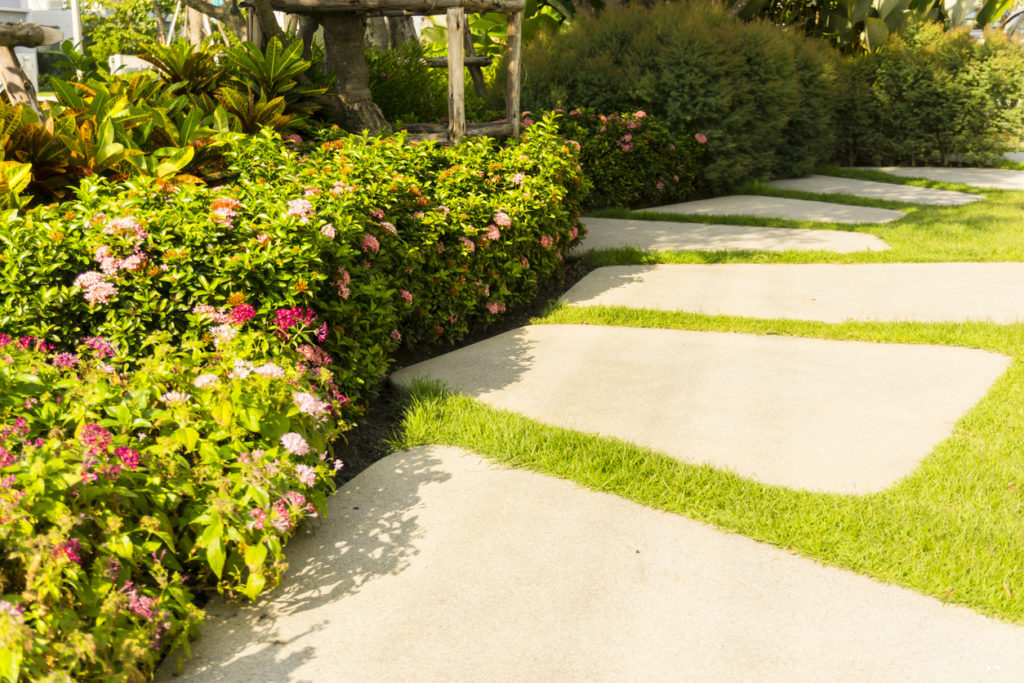
To make true sand finish concrete, you have to use a special mix in your concrete before it sets. What can you do if you want the look of sand finish concrete on your pre-existing concrete? There are a few different techniques we recommend when you want to add some texture and make your concrete look more interesting.
Add a Sand Finish Layer
If you want a true sand finish, you don’t necessarily need to break up your current concrete and remove it. You always have the option of just doing a thin layer of sand finish over your current concrete. To make sure the two separate layers bond, you need to first patch the old concrete and fix any cracks. After cleaning and lightly sanding your existing concrete, you can pour a thin layer of sand finish concrete on top.
Use an Acid Etching Finish
You can get a similar effect by applying muriatic acid to pre-set concrete. Acid etching causes the rough texture of sand, but there won’t be as many subtle color variations. The typical process involves adding one part acid to three parts water and spreading it on damp concrete. Next, scrub the solution with a brush and let it sit for a few minutes. Once your concrete has your desired level of texture, you neutralize the acid with baking soda and rinse it off. Keep in mind that the acid used on concrete is very dangerous. It can cause chemical burns and toxic fumes, so always follow the product’s directions carefully and wear protective equipment.
Sand Your Concrete With a Rough Abrasive
This method won’t add as much texture as true sand finish concrete. However, it can remove excess shine from highly-polished concrete and make it a little more textured. This easy method just involves sanding the concrete with high-grit sandpaper. Keep in mind that concrete is very hard, so you’ll need specialized tools. Make sure you get diamond sandpaper for concrete instead of ceramic or aluminum ones. If possible, select a water-fed concrete sander that continuously wets the area. This helps speed up the process and ensure an even finish. For large areas, a walk-behind sander is easier to use than a handheld one.
Spray a Textured Coating
There are a variety of spray-on overlays you can use to add texture to your concrete. These coatings refinish your existing concrete with a new color and texture. To get results similar to a sand finish, you’ll need to select a smooth, fine-grained texture. Applying a textured spray is fairly simple. You just need a basic hopper gun and air compressor along with your coating of choice. To apply it, clean your concrete and spray on the finish. Depending on how sandy you want it to look, you may want to loosely brush the surface afterward.
Final Thoughts
Ultimately, sand finish concrete is one of the best concrete textures to try. It adds a little anti-slip texture and stylish flair without looking too busy or distracting. You’ll typically need to add the finish to fresh concrete, but we have found a few tricks for adding texture to pre-set concrete. Whatever method you use, a little patience and the right tools can guarantee great results.
Sand Finish Concrete FAQs
Still not entirely sure of how the sand finish concrete process works? Here are the answers to a few common issues we encounter while dealing with sanded concrete.
You might be tempted to just use the random sand you have on hand, but we recommend getting actual concrete sand. Concrete sand has been carefully washed and filtered to remove silt and pebbles. This ensures you get a fine, even texture to your finished concrete.
Using a sander to get texture is possible. However, not all sanders work for concrete, so you need to make sure you use the right sandpaper. Typically, diamond sanding pads are the only style that doesn’t wear out rapidly.
The sand used for sand finish concrete coordinates well with most shades of brown and gray. However, it is possible to find some colored concrete mixes that look nice with a sand finish. Golden yellows, soft corals, and pale tans all complement the texture of a sand finish. Remember you can pick different types of concrete sand and mix them to get the perfect color for your project.
These two finishes both involve laying concrete and then removing the top layer before it fully sets. However, a sand finish removes more of the cement coating on the top. Salt-and-pepper finishes also use less concrete sand. Overall, a salt-and-pepper finish looks a little smoother and more finely-grained than a sand finish.
When you are washing your concrete to create a sand finish, using uneven pressure can cause a stripey, streaky appearance. Promptly doing another layer of washing can fix these streaks. If you don’t notice them until the concrete sets, you can use a concrete sander to gently remove high spots. Unevenness might still be noticeable, but you can at least get rid of obvious stripes.
